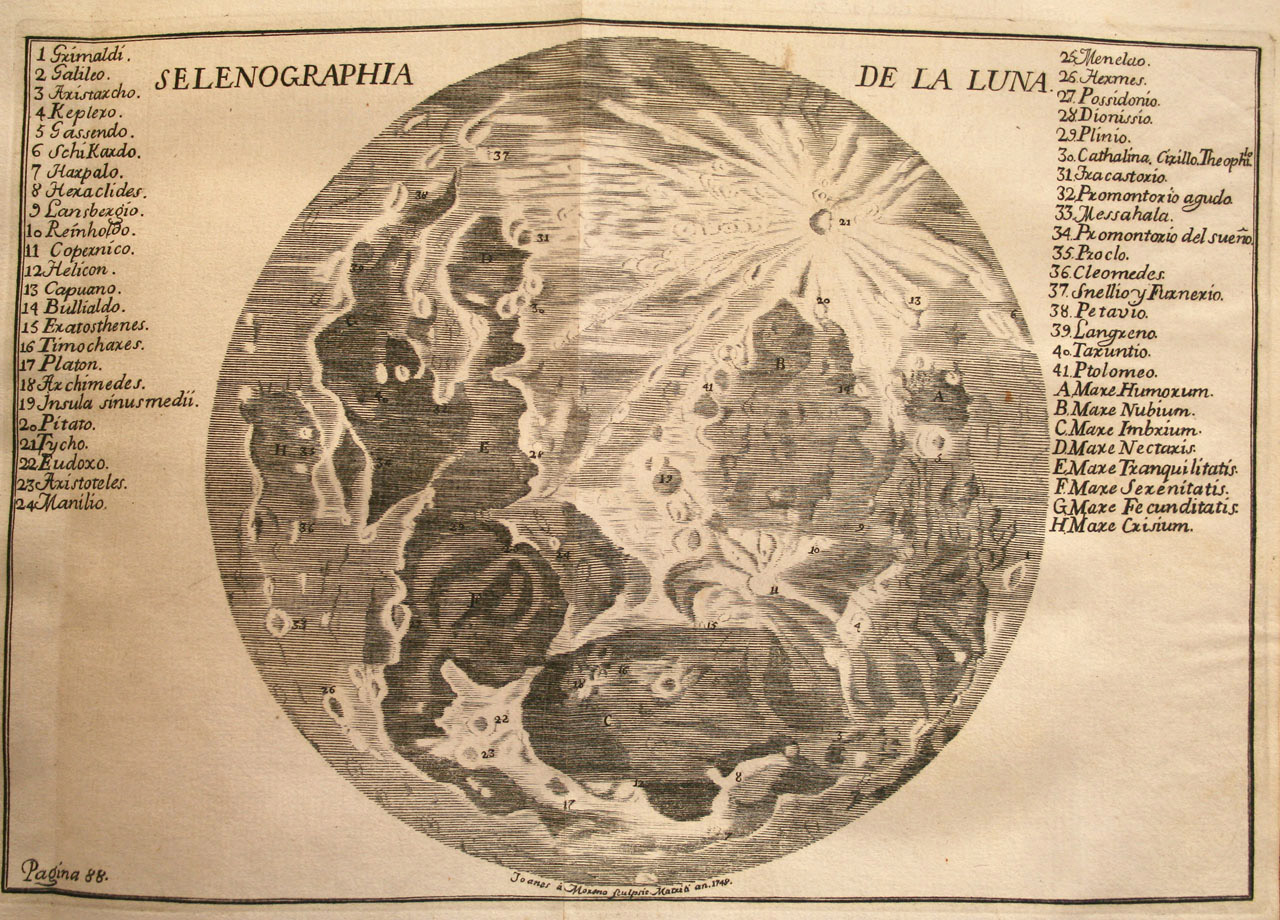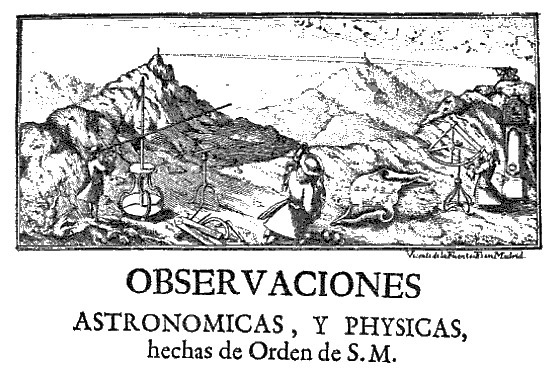Difference between revisions of "April 17, 2009"
| Line 1: | Line 1: | ||
__NOTOC__ | __NOTOC__ | ||
=Peru And the Moon= | =Peru And the Moon= | ||
| − | |||
<!-- ws:start:WikiTextHeadingRule:2:<h1> --> | <!-- ws:start:WikiTextHeadingRule:2:<h1> --> | ||
<!-- ws:start:WikiTextLocalImageRule:8:<img src="/file/view/LPOD-Apr17-09.jpg/68172881/LPOD-Apr17-09.jpg" alt="" title="" /> -->[[File:LPOD-Apr17-09.jpg|LPOD-Apr17-09.jpg]]<!-- ws:end:WikiTextLocalImageRule:8 --><br /> | <!-- ws:start:WikiTextLocalImageRule:8:<img src="/file/view/LPOD-Apr17-09.jpg/68172881/LPOD-Apr17-09.jpg" alt="" title="" /> -->[[File:LPOD-Apr17-09.jpg|LPOD-Apr17-09.jpg]]<!-- ws:end:WikiTextLocalImageRule:8 --><br /> | ||
| − | <em>image by [mailto:paco.bellido@gmail.com Paco Bellido], Spain</em><br /> | + | <em>image by [mailto:paco.bellido@gmail.com" rel="nofollow Paco Bellido], Spain</em><br /> |
<br /> | <br /> | ||
The 1748 book, <em>Observaciones astronómicas y físicas hechas en los Reinos del Perú*</em> published in Madrid by <br /> | The 1748 book, <em>Observaciones astronómicas y físicas hechas en los Reinos del Perú*</em> published in Madrid by <br /> | ||
| − | [http://en.wikipedia.org/wiki/Jorge_Juan_y_Santacilia Jorge Juan] and [http://en.wikipedia.org/wiki/Antonio_de_Ulloa Antonio de Ulloa] includes this map of the Moon. Juan and Ulloa joined the French expedition <br /> | + | [http://en.wikipedia.org/wiki/Jorge_Juan_y_Santacilia" rel="nofollow Jorge Juan] and [http://en.wikipedia.org/wiki/Antonio_de_Ulloa" rel="nofollow Antonio de Ulloa] includes this map of the Moon. Juan and Ulloa joined the French expedition <br /> |
of La Condamine (he got a named crater out of it!) to measure the shape and size of the Earth. For this purpose <br /> | of La Condamine (he got a named crater out of it!) to measure the shape and size of the Earth. For this purpose <br /> | ||
they used a 16 foot focal length telescope to measure Moon eclipses; using a lunar map to identify landmarks <br /> | they used a 16 foot focal length telescope to measure Moon eclipses; using a lunar map to identify landmarks <br /> | ||
| Line 14: | Line 13: | ||
The same named features are indicated on each map, with the endings changed on the 1748 map to match <br /> | The same named features are indicated on each map, with the endings changed on the 1748 map to match <br /> | ||
Spanish. It is possible that this derivative map has been relatively unknown, for few lunar historians may have <br /> | Spanish. It is possible that this derivative map has been relatively unknown, for few lunar historians may have <br /> | ||
| − | looked in a book about Peru. The book is [http://books.google.es/books?id=nj-0ZIIkhwsC&pg=PA89&source=gbs_selected_pages&cad=0_1#PPP5,M1 online] so readers of Spanish can explore what Juan and Ulloa say <br /> | + | looked in a book about Peru. The book is [http://books.google.es/books?id=nj-0ZIIkhwsC&pg=PA89&source=gbs_selected_pages&cad=0_1#PPP5,M1" rel="nofollow online] so readers of Spanish can explore what Juan and Ulloa say <br /> |
about the origin of the map; I didn't find anything but did come across this nice illustration of their observing <br /> | about the origin of the map; I didn't find anything but did come across this nice illustration of their observing <br /> | ||
instruments and techniques:<br /> | instruments and techniques:<br /> | ||
| Line 20: | Line 19: | ||
Thanks to Paco for the photo of the map and for submitting it to LPOD!<br /> | Thanks to Paco for the photo of the map and for submitting it to LPOD!<br /> | ||
<br /> | <br /> | ||
| − | <em>[mailto:tychocrater@yahoo.com Chuck Wood]</em><br /> | + | <em>[mailto:tychocrater@yahoo.com" rel="nofollow Chuck Wood]</em><br /> |
<br /> | <br /> | ||
<strong>Technical Details</strong><br /> | <strong>Technical Details</strong><br /> | ||
| Line 26: | Line 25: | ||
<br /> | <br /> | ||
<strong>Related Links</strong><br /> | <strong>Related Links</strong><br /> | ||
| − | Paco's lunar [http://mizar.blogalia.com website]<br /> | + | Paco's lunar [http://mizar.blogalia.com" rel="nofollow website]<br /> |
<br /> | <br /> | ||
<hr /> | <hr /> | ||
Revision as of 19:06, 4 January 2015
Peru And the Moon

image by " rel="nofollow Paco Bellido, Spain
The 1748 book, Observaciones astronómicas y físicas hechas en los Reinos del Perú* published in Madrid by
" rel="nofollow Jorge Juan and " rel="nofollow Antonio de Ulloa includes this map of the Moon. Juan and Ulloa joined the French expedition
of La Condamine (he got a named crater out of it!) to measure the shape and size of the Earth. For this purpose
they used a 16 foot focal length telescope to measure Moon eclipses; using a lunar map to identify landmarks
for timing the progression of the eclipse shadow across the lunar surface (p 73 of their book). This appears to
be a degraded copy of Cassini's 1692 map shown in Whitaker's Mapping and Naming the Moon, figure 48.
The same named features are indicated on each map, with the endings changed on the 1748 map to match
Spanish. It is possible that this derivative map has been relatively unknown, for few lunar historians may have
looked in a book about Peru. The book is " rel="nofollow online so readers of Spanish can explore what Juan and Ulloa say
about the origin of the map; I didn't find anything but did come across this nice illustration of their observing
instruments and techniques:

Thanks to Paco for the photo of the map and for submitting it to LPOD!
" rel="nofollow Chuck Wood
Technical Details
- Astronomical and Physical Observations Made in the Kingdom of Peru
Related Links
Paco's lunar " rel="nofollow website



